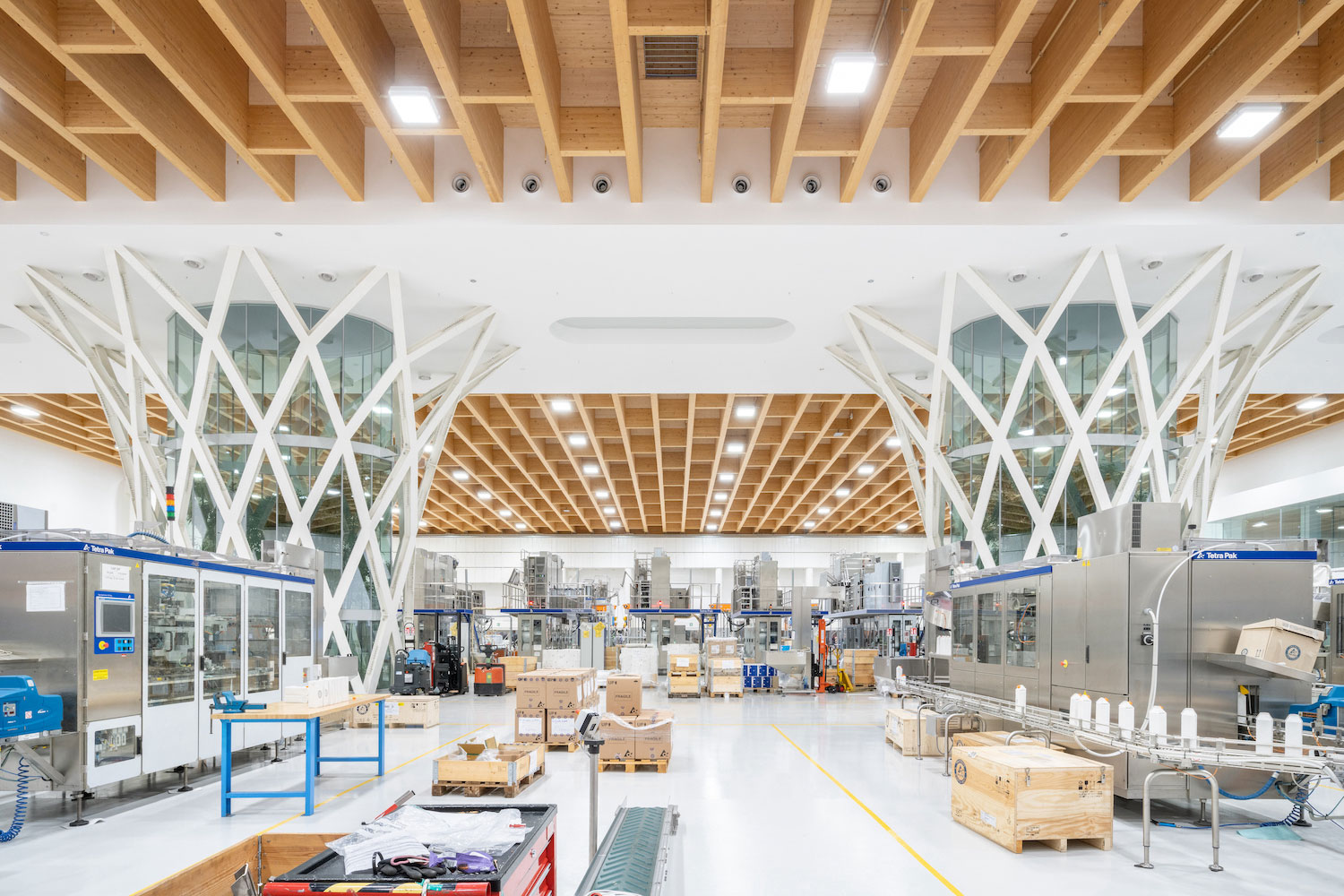In Modena, Italy, ZPZ Partners has designed a new headquarters for multinational food packaging and processing company, Tetra Pak.
The hall boasts a white floor and glulam ceiling, devoid of structural obstacles except for two large lattice elements functioning as internal gardens.
Photos
Marco Cappelletti
Designed by Modena-based studio ZPZ Partners, Tetra Pak’s new HQ will serve as the firm’s European centre for research, development, and prototype production. The headquarters is located in an industrial district west of Modena, northern Italy, where the company has been since 1980.
From a distance, the new structure is defined by its predominantly opaque, pristine white façade. On closer inspection, soft and flexible surfaces made of precast concrete panels reveal themselves: triangular shapes imprinted on the panels gradually diminishing towards the top.
Wooden elements in the grid provide shade and reflect the identity and environmental quality within the production site.
Elevations to the southeast and northwest feature extensive glass bands on the ground floor that allow daylight to enter the expansive production space. Further natural light permeates the 4,500 square metre hall through plant-filled structures at entry points, gardens between offices, numerous skylights scattered in a free-form on the roof, and street-level windows on the southwest and northeast facades.
Structural steel elements in in the centre and along the building’s axis and perimeter facilitate a spacious and open environment, designed to maximise adaptability. Within this space, four production lines have been established, accommodating up to 36 packaging machines with a conveyor belt and other means of utility distribution being housed in accessible corridors in the basement. Further conveyor belts for recycling are situated underground in two tunnels, each seven meters wide and spanning the building’s length. Such an approach minimises noise and ensures clean spaces while concealing processing waste from view.
The main facade, on the northwest side, opens up to accommodate entrances, offices, and laboratories. The offices and laboratories, arranged in an open and flexible layout, form a separate building volume that appears independent from the rest of the structure. Here can be found quieter spaces for specialised activities, along with space for dedicated design areas, and informal meeting places.
The necessity for a spacious area dedicated to assembling and testing food packaging machines prompted ZPZ Partners to reimagine the industrial space. The resulting facility, currently utilized for research and development, has been designed as a completely transformable hangar, serving as a hybrid workspace capable of hosting production lines or able to be used as a venue for events and training.
More images
Credits
Client
American Battle Monuments Commission (ABMC)
Architect
KAAN Architecten
Landscape architect
Karres + Brands landschapsarchitecten B.V.
Structural designer and supervisor
Pieters Bouwtechniek
Mechanical and electrical designer and supervisor
HP Engineers
Civil designer and supervisor
Smits Rinsma, Zutphen
Fire safety engineer & acoustics advisor
DGMR
Main contractor
Groep Van Roey
Structural engineer
DeClerk & Partners
Structural engineer contractor
C.T. de Boer
Mechanical engineer
Deltha
Electrical engineer
Maris
Civil engineer
Dirix
Source: Architecture Today





